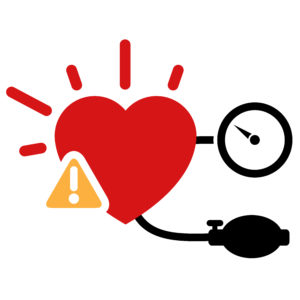CV Risk Research: Graham Kelly
Graham Kelly, Research Co-ordinator
As a beneficiary of the Thalidomide Trust himself and a skilled market and social researcher, Graham Kelly is the ideal person to work with beneficiaries who want to take part in the CV Risk research Study. He is a member of the Trust’s National Advisory Committee and, given his career in research, also sits on the Research sub-committee, looking into the issues and conditions that the Trust might need to find out more about.
“When the Trust’s Director of Health and Wellbeing, Katy Sagoe, was planning and costing the CV Risk research project, it became clear that a co-ordinator was needed to maximize participation and help with the logistics” he explains.“I stepped into that role, and act as the bridge between the Royal National Orthopaedic Hospital (RNOH) and beneficiaries taking part in the research.”
“As thalidomide damage occurred between 1958 and 1962 thalidomiders in the UK are approaching their late fifties, a time in your life when your susceptibility to heart attacks and strokes gets bigger. People our age, of all abilities, are getting checked out regularly and taking blood pressure readings is vital in assessing the risk. For many it’s a routine part of healthcare but, if you have shortened limbs, taking your blood pressure becomes more difficult for medical professionals.”
“I was fifty-six before I had a reliable blood pressure reading” he continues, “doctors and hospital staff couldn’t take it because my arms were too short and the blood pressure cuff was too small to fit around my thigh for a leg reading. And when one was taken they were unsure as to how to interpret the figures gathered.”
“The CV Risk study will compare readings taken during surgery both inside the body (with an arterial line) and outside the body (with a normal cuff ), and look at the correlation between them. For example, inside body measurement might tend to be higher than the outside body measurement, or vice versa. By understanding how they compare we can learn the extent to which routine cuff measurements might need to be adjusted by Clinicians in order to produce more reliable blood pressure measurements for thalidomiders. The routine method for taking blood pressure, with a cuff on the outside of the body, is the most practical method but is actually not the most accurate. The gold standard for measuring blood pressure is taking it internally, through an arterial line into a vein – but this requires anaesthetic and could not be done at a routine doctors’ appointment.”
 “We can’t put people under general anaesthetic without good reason, so we can only recruit people to the research study who are scheduled to have an operation, and would be going under anyway. We’re asking their consultants to take blood pressure readings, with both methods, during the surgery and share the figures with us.”
“We can’t put people under general anaesthetic without good reason, so we can only recruit people to the research study who are scheduled to have an operation, and would be going under anyway. We’re asking their consultants to take blood pressure readings, with both methods, during the surgery and share the figures with us.”
Finding the right people for the study is a complex business as Graham explains; “It’s quite time consuming going through dates of surgery and consultants’ details with people.” He says “Dr Rachel Baumber, the senior researcher on the project, is a working doctor so does not have the time to gather and give all the relevant information. That’s where I come in.”
“The process works like this – the Trust has asked beneficiaries who would like to take part in the research – and are scheduled to have an operation under general anaesthetic - to get in touch. The team passes their details to me and I contact the beneficiary in person by phone to give them all the information and answer any questions or concerns. If the person wants to go ahead I ask for their permission to contact their consultant so that I can explain the process to them and ask if the procedure is appropriate for the research. If the operation isn’t going to involve an arterial line into a vein, the readings can’t be taken and we let the participant know that they won’t be needed on this occasion; but if it is being used, we ask the consultant to take readings during the op and fill in an electronic data questionnaire.”
All the consultants Graham has been in contact with have been supportive of the study and completely understand the rationale for it:
“Although they’re busy people" Graham comments “consultants are really interested in this project. We don’t currently have an authoritative algorithm for blood pressure readings from non-standard parts of the body, and having one would enable us to advise GPs and other clinicians on how to interpret readings effectively”
“For beneficiaries taking part, my task is just to explain what happens and answer their questions.” Graham says, “and for consultants it’s all about explaining the rationale and asking them to take the necessary readings.”
“The research will take about three years to complete – it may take longer as we’re so dependent on the numbers of people having operations that involve an arterial line. We’ve only just started recruiting participants but people from all over the country are interested. We’ve had enquiries from the Isle of Wight, Yorkshire, the West Country and the North East – from beneficiaries who want their operation to contribute to a study that could help save lives.”
Click here to find out more about the CV Risk Research project and to see if you are eligible to take part in the study.
